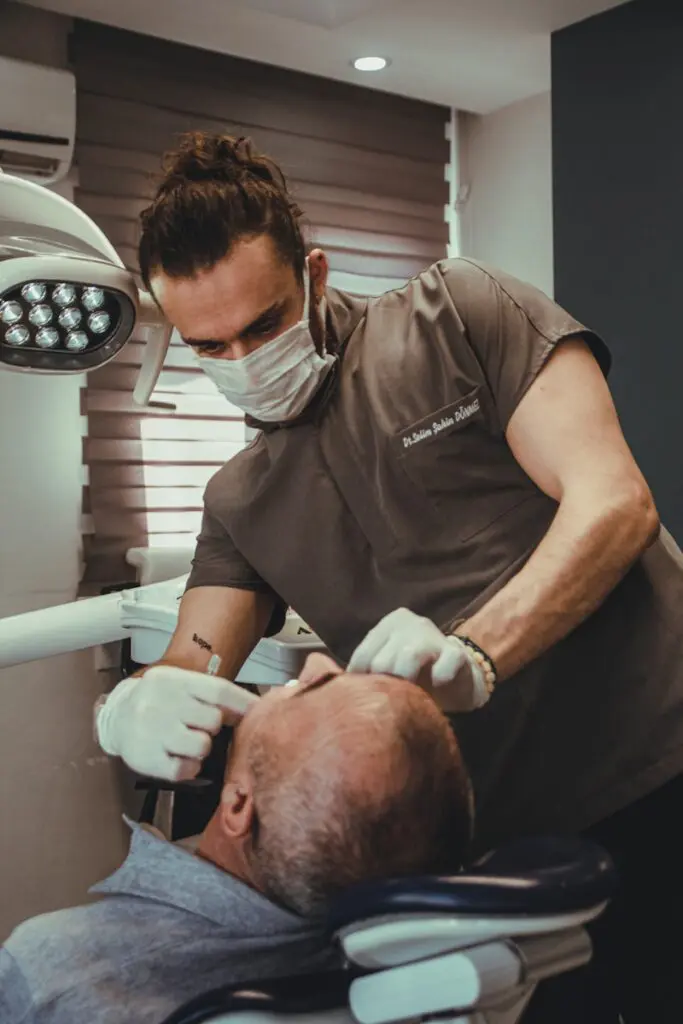Uncovering the Common Causes of Crooked Teeth
There are a few causes of crooked teeth. Sometimes, it’s all in the genes—just like eye color or height, the way our teeth align can be inherited from our parents. Other times, it might be due to childhood habits like thumb sucking or prolonged use of a pacifier, which can gently nudge those teeth out of place. Then there’s the space issue; if your mouth is a bit too small for all those teeth, they might crowd together or overlap. And let’s not forget about losing baby tooth too early or too late, which can also affect how adult teeth come in. So, while crooked teeth can be a bit of a mystery, it’s usually a mix of genetics, habits, and timing that shapes those unique smiles!

1. Genetic Factors
Genetics play a major role in the alignment of your teeth. You may have inherited traits from your parents or relatives that make your smile unique but also cause dental challenges.
- Jaw and Tooth Size: If your jaw size is too small for your teeth, it can cause overcrowding, leading to crooked teeth. On the other hand, extra spacing in a larger jaw may create gaps.
- Misalignment Runs in Families: Having a family history of misaligned teeth could explain similar issues in your smile.
- Overbite or Underbite: These are often inherited conditions that can impact your teeth’s alignment over time.
2. Developmental Issues
Sometimes dental alignment problems begin during childhood as the teeth and jaw develop. Early intervention can play a key role in preventing these issues from worsening later on.
- Premature Loss of Baby Teeth: Losing baby teeth earlier than usual creates gaps that may interfere with how adult teeth grow in. Without proper guidance, they can shift out of place.
- Delayed Eruption of Adult Teeth: If adult teeth come in late, existing teeth may drift into the wrong positions, resulting in misalignment.
- Jaw Development Complications: Problems during jaw growth can lead to improper alignment, making early dental care vital for healthy development.
3. Myofunctional Habits
Certain childhood habits can have a lasting impact on tooth alignment. These habits should be addressed early to prevent misalignment.
- Thumb Sucking: Prolonged thumb sucking can push the upper teeth forward or change the shape of the jaw, leading to an overbite.
- Tongue Thrusting: Frequent tongue pressing against the teeth can alter their alignment, creating gaps or causing them to flare out.
- Pacifier Use: Pacifiers can mimic the effects of thumb sucking if used beyond the recommended age. Limiting prolonged pacifier use can help protect dental alignment.
4. Oral Health and Hygiene
Maintaining good oral hygiene is essential for preventing alignment issues. Dental health problems can directly or indirectly cause teeth to shift into crooked positions.
- Tooth Decay: Untreated cavities may lead to tooth loss, creating gaps that allow neighboring teeth to move out of place.
- Gum Disease: Advanced gum disease weakens the gums and bone that support the teeth, increasing the likelihood of misalignment.
- Consistent Oral Care: Prevention is the best medicine. Regular brushing, flossing, and professional cleanings keep your teeth and gums healthy, reducing the risk of crooked teeth.
5. Structural and Jaw Issues
The structure of your jaw and overall facial development can contribute to how your teeth align. Even minor irregularities in the jaw can lead to noticeable dental misalignment.
- Poor Jaw Growth: If your jaw doesn’t develop properly, it can result in overcrowding, gaps, or crooked teeth.
- Underbite and Overbite: These conditions affect how the upper and lower teeth come together, often pushing teeth out of proper alignment.
- Crooked Jaw: Even a minor misalignment in the jaw can throw off the positioning of your teeth, causing uneven bites and alignment issues.
6. External Factors
Life events or accidents can also affect dental alignment. Injuries or dental trauma require prompt care to minimize long-term effects.
- Injury to Teeth: Impact from a fall or accident can shift teeth out of their natural position. Broken teeth may also cause surrounding teeth to move over time.
- Tooth Loss: Missing teeth, especially if left untreated, can cause other teeth to shift, leading to misalignment.
- Regular Dental Checkups: Early identification of trauma or misalignment by a dental professional helps prevent further complications.
7. Treatment Options at Limestone Hills Orthodontics
No matter the cause, there are effective ways to fix crooked teeth. At Limestone Hills Orthodontics in Austin, TX, we offer a range of treatments tailored to your needs.
- Braces: Traditional metal or ceramic braces remain one of the most reliable solutions for severe misalignment. They gradually shift teeth into proper positions with consistent adjustments.
- Clear Aligners: Modern options like Invisalign are nearly invisible and perfect for fixing minor alignment problems. These custom-made aligners are removable for eating and brushing.
- Rubber Bands: For jaw misalignment issues like overbites or underbites, orthodontic rubber bands can help pull the jaw and teeth into alignment over time.
- Early Orthodontic Intervention: Treating alignment issues during childhood makes it easier to correct problems before they worsen.
Every smile is unique, and we believe in creating personalized treatment plans that address your specific concerns. By fixing crooked teeth, you’re not only improving your appearance but also enhancing your oral health and confidence.
Prevention Tips for Crooked Teeth
While not all causes of crooked teeth can be prevented, certain habits can help maintain better alignment:
- Practice good oral hygiene to prevent gum disease and decay.
- Avoid habits like thumb sucking or prolonged pacifier use.
- Schedule regular dental checkups to catch alignment issues early.
- Wear mouthguards during sports to protect your teeth from injuries.
- Consider orthodontic evaluations for children to address developmental concerns.
By staying proactive, many alignment issues can be minimized or avoided altogether.

Why Choose Our Austin, TX Orthodontic Practice?
At our Austin orthodontic office, we provide exceptional, personalized care to help every patient achieve a healthy, confident smile. Here’s why families choose us for their orthodontic needs:
Experienced Orthodontists
Our skilled orthodontists specialize in treating children and teens with jaw alignment issues. We offer advanced solutions like reverse pull headgear for effective results.
Tailored Treatment Plans
No two smiles are the same! We customize each treatment plan to fit your child’s unique orthodontic needs.
Guidance at Every Stage
From the initial consultation to the final smile reveal, our team is here to support you with expert advice, adjustments, and care.
Comprehensive Treatment Options
We offer a variety of solutions, including reverse pull headgear, Invisalign, and traditional braces, so every patient gets the best possible treatment.
Discover Your Smile at Limestone Hills Orthodontics
At Limestone Hills Orthodontics, we’re passionate about helping patients in Austin, TX, achieve their healthiest and most beautiful smiles. If you’re dealing with crooked teeth, our experienced team is here to provide expert care and personalized treatment plans.
Schedule a free consultation with us today to explore your options. Whether you’re considering braces, Invisalign, or other orthodontic solutions, we’ll guide you every step of the way. Let’s work together to transform your smile and boost your confidence!
About the Authors
Dr. Rodrigo Viecilli – Orthodontist in Austin, TX
Frequently Asked Questions
Can your teeth get crooked as an adult?
Yes, your teeth can indeed become crooked as an adult! It’s not just something that happens during childhood or adolescence. Various factors like natural aging, losing teeth, or even habits like grinding your teeth at night can lead to shifts in your smile. Even if you had braces as a kid, changes in your jawbone or gums over time can cause your teeth to move. But don’t worry, there are plenty of options to help keep your smile straight and healthy, from retainers to modern orthodontic treatments. So, if you’re noticing some changes, it might be a good idea to chat with your dentist or orthodontist!


